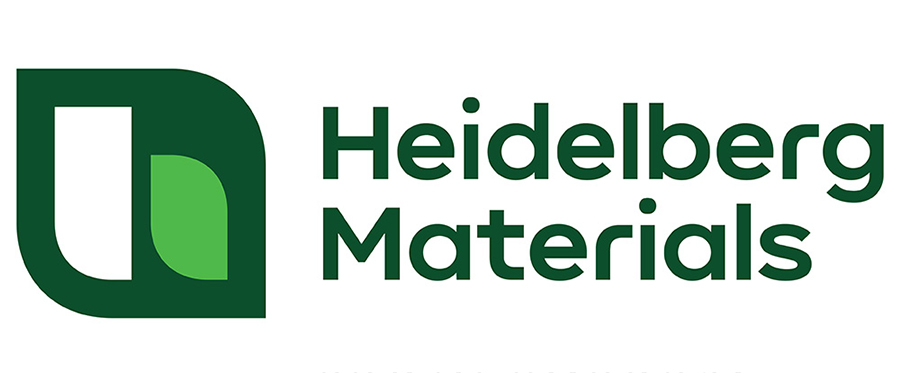Sechelt
Heidelberg Materials’ Sechelt Mine (formerly Lehigh Materials) has been operating in the community of Sechelt since 1988. The Sechelt Mine is located within the traditional territory of the shíshálh Nation. The mine works closely with the local community for environmental sustainability efforts in noise, light and dust management. To learn more about our environmental sustainability efforts, explore the details below.
Noise Management
One of our priorities is maintaining a reasonable balance between the impact of our noise and the benefits our business brings to the Sechelt community. For this reason, the mine actively monitors noise levels at different locations throughout the Sechelt community as well as the noise levels from different activities and operating equipment within the mine. This provides us with a better understanding of the contribution of different noise from our processes and specific noise frequencies that can be considered bothersome.
Noise levels are measured during the day and night to help establish a baseline of the types of noises that are generated from the various sources in the community, including the mine. The information is used by our consultants to generate a model that can:
- Create a visual depiction of quiet and loud areas throughout the community, helping us to prioritize our mitigation efforts.
- Allow us to theoretically test different noise mitigation solutions and determine which is most effective.
- Compare the noise level of daytime and nighttime operations, and the effect that different weather (such as rain, wind and snow) has on noise distribution throughout the community.
Through regular monitoring of the sound levels, Heidelberg Materials is better able to pinpoint specific sources and make improvements or fix a maintenance issue immediately. You can see the noise produced in real-time from the monitors we’ve installed at Sinku Drive and Kwatamus Avenue. These monitors are also programmed to record any loud noises that they capture. This information is publicly available on our Noise Monitor website. View Noise Live Monitor Readings.
Looking for more information about Noise? Please see our Frequently Asked Questions document or reach out to us with your questions.
Dust Management
During dry periods, we realize that dust can be generated from our mine and barge loadout. We currently implement a standard Dust Management Plan and are working towards making it more robust and efficient. Additional information about our dust management plan and the work we have completed to date, is outlined below.
Our Dust Management Plan implements protocols to mitigate dust generated from our production and processes, as well as dust generated from wind which we refer to as fugitive dust. Some of the protocols that Heidelberg Materials implements are:
- Application of water and suppressants to gravel and unpaved haul roads within the mine site.
- Enforcement of low-speed limits to reduce dust generated by site vehicles.
- Application of water to conveyor transfer points and material stackers with atomized water.
- Increased moisture content in fine materials prior to loading them onto the conveyor and barges.
- Standard operating procedures for barges and ships entering the bay that takes prevailing winds into consideration when approaching.
- In addition to our standard dust management protocols, Heidelberg Materials is working with the shíshálh Nation Chief and Council to implement a community wide dust monitoring network. This will help us track concentrations of airborne particulate matter (PM) throughout Sechelt, to understand the sources. The PA-2 monitors will track PM2.5 and PM10 concentrations in the air, which will be compared to the WorkSafeBC criteria for exposure on a regular basis. Air Quality Monitoring data can be reviewed in real time. View Live Dust Monitor Readings
Heidelberg Materials also contracts consultants to conduct routine Industrial Hygiene assessments on employee exposure to PM2.5, PM10, silica, noise, and vibration within the mine area. Personal dust monitors are placed on employees with the greatest potential exposure to particulate matter and silica for a one-week period. To date, no exposure rates have exceeded the accepted Health, Safety and Reclamation Code for Mines criteria for particulate matter or silica.
Light Management
The lighting used at the loadout structure is meant to ensure the safety of workers, nearby boats, and seaplanes, however; there are different modifications that Heidelberg Materials can make to help reduce the amount of light pollution we are creating at night.
You may have already noticed some of the changes that we’ve made:
- All ships are now required to turn off all deck lighting while docked in the Bay during loading.
- All lights along the loadout conveyor are turned off while loading ships. Lighting on the shiploader is required to be on while loading for the safety of workers.
- All unnecessary lights were disconnected, this includes the spotlight in the beach compound, and the lights on the west side of the conveyor walkway.
- Shielding has been placed around lights to reduce glare to the surrounding community.
- The existing high pressure sodium (HPS) lights have been converted to Dark Sky Approved LED lights. These new bulbs will give off a cool blue hue, with drastically reduced bulb glare.
- The circuits have been segregated along the loadout, allowing employees to turn off lights in areas that aren’t currently being utilized.
Mine Permit Amendment
Heidelberg Materials will be proposing an amendment to our mining permit to allow for continued and sustainable mining through 2050. Preliminary information can be found in our permit amendment overview. Please also submit your feedback on the Sechelt Mine and our proposed amendment plans through our survey.
Contact Us
To contact Sechelt Mine for more information on our environmental sustainability system, email us.
.jpg?sfvrsn=b67a537b_0)
Product Calculators
Looking for aggregate suppliers near you, but aren't sure how much to order? Try our construction calculators to determine the volume and/or weight of material required for your next job!

